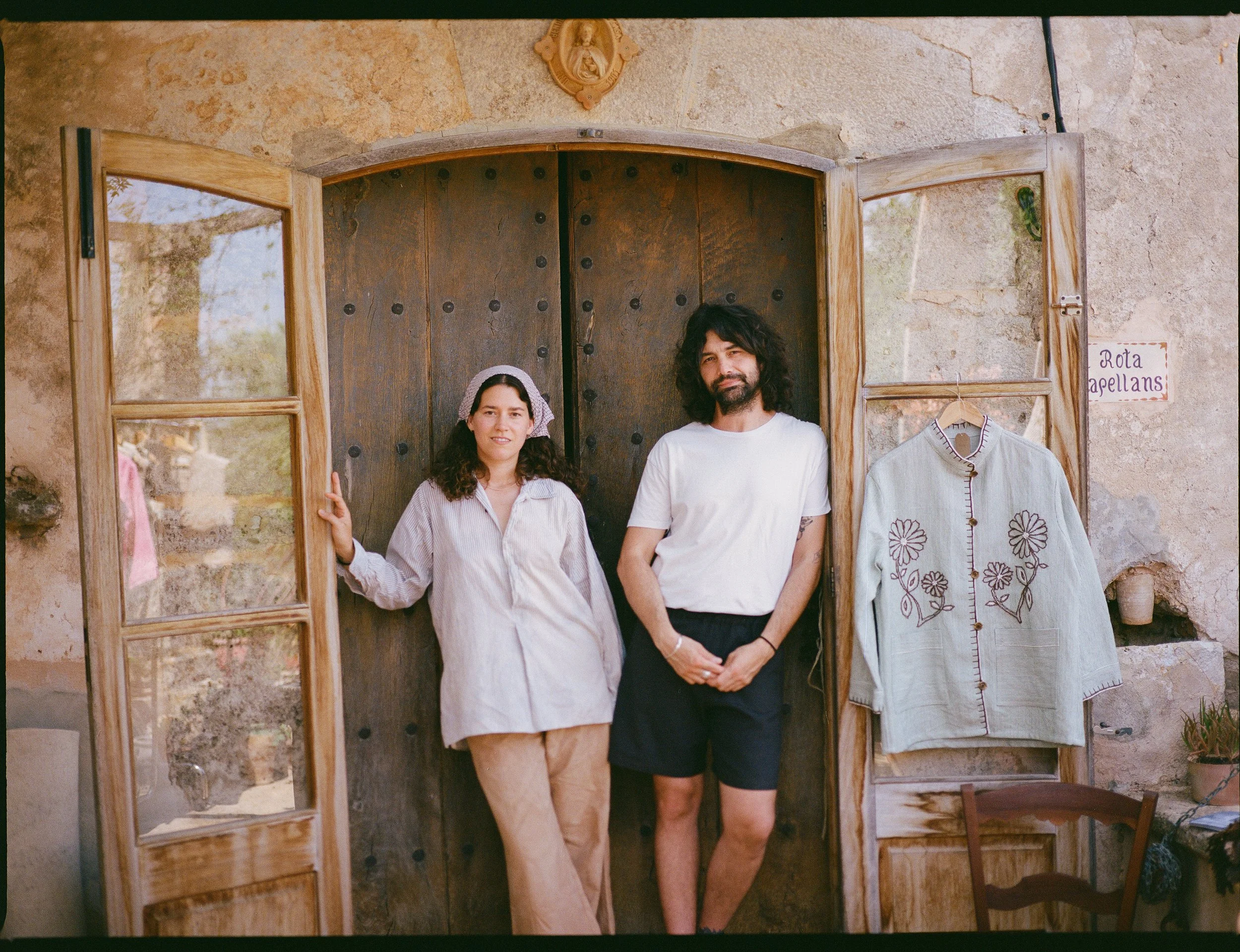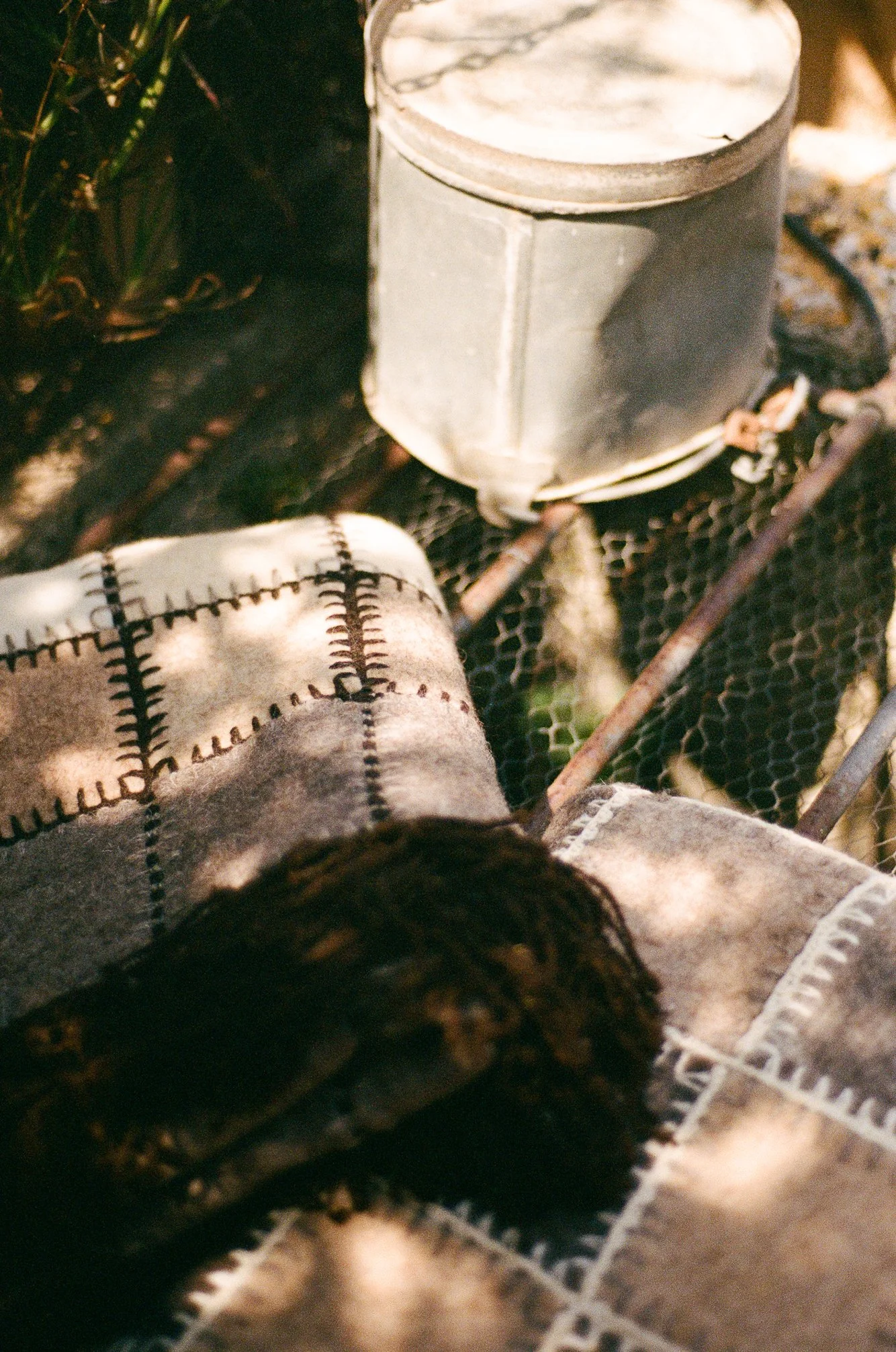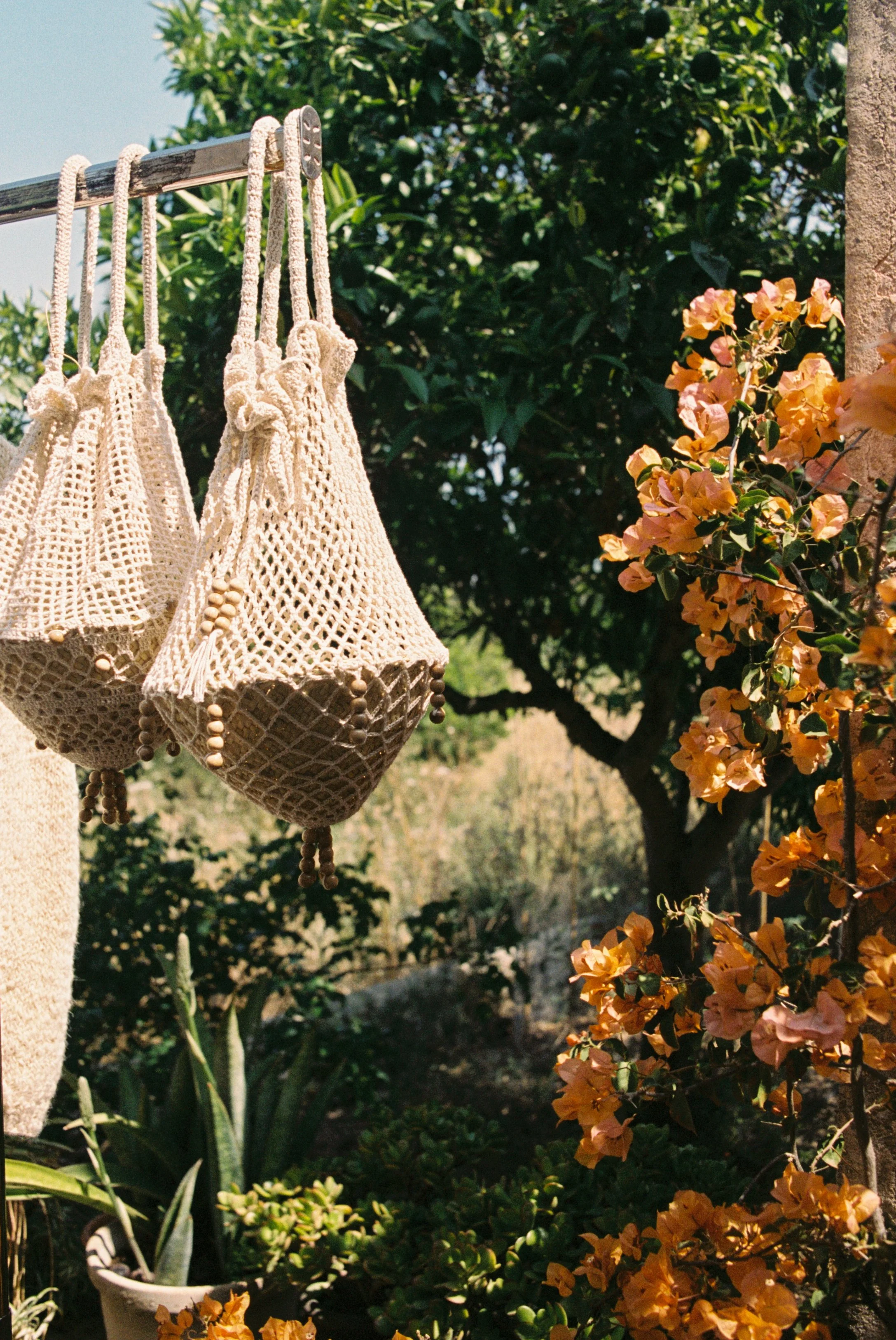Partner Spotlight: Accidente con flores
Written by Katerina Knight for Thread Caravan
Photos by Luna Antonia Arboleda and Eli Apezteguia for Thread Caravan
When Ola Kawalko and Adrián Martínez Marí met in Antwerp in 2014, it didn’t take long to realise they shared more than just a connection in love—they also shared a vision in design. Ola was finishing her fashion design studies at the Royal Academy of Antwerp; Adrián had recently graduated from the Academy of Fine Arts in Tenerife. Together, they dreamed of creating a multidisciplinary design studio, rooted in craft, community, and nature.
By 2017, their vision became reality with the founding of Accidente Con Flores, what began with fashion, quickly evolved into something more expansive. Today, from their studio on the island of Mallorca, the couple produces collections that span menswear, womenswear, accessories, ceramics, rugs, and soft furnishings. Their work is grounded in collaboration with artisans on the island who share the same ethos of sustainability, slowness, and reverence for place.
Before settling in Mallorca, the duo spent time in Ibiza, Adriáns homeland; it was here they began exploring the idea of inviting local artisans into their creative process. “But once we moved to Mallorca, a much more sizable island, we discovered the crafts and traditional techniques are even richer here,” Adrián explains.
Their collections are a result of many skilled hands. For example, their felted rugs are made from the wool of roja mallorquinas– a native Mallorcan sheep –sourced from shepherds across the island. The wool is processed by Llanatura, a circular design studio in Inca. Adrián then hand-cuts each rug to a unique design, returns the textile to Lllanatura to be hand-felted, before he finally finishes the rug with handspun wool fringes. Retaining the tones and textures of the raw fiber, nothing is dyed—everything is celebrated as it is.
Each object produced by Accidente Con Flores is imbued with this sense of slow, considered making. The result is not just a product, but a story—one woven through with the spirit of the island and the artisans who live there.
Accidente Con Flores has become a meeting place for Mallorca’s craftspeople, and much of that comes down to how Ola and Adrián have approached the community. “The relationships we’ve built with local artisans came naturally,” Adrián says. “We’ve always been open and curious.From the beginning, we traveled around the island, met craftspeople, learned what they specialised in, and found ways to work together. We never tried to impose something artificial.”
Instead, they’ve worked closely with makers already practicing their craft, from potters and metalworkers to weavers and dyers. “We always give the artisans freedom,” Adrián adds. “Our role is to collaborate, to inspire each other, and to ensure that everyone is paid fairly and treated with respect.”
A close relationship has formed with Gemma Salvador and Eugenia Marcote of Llanatura. “We met them early on, and together we’ve grown. Their knowledge of local wool and felting deepened, and we learned how to apply our design background to this beautiful, raw material.”
Much of Accidente Con Flores’ work is inspired by the organic forms and rich traditions of the island. Palm leaf weaving, or llata, is one such heritage craft they help to revive. “It’s one of Mallorca’s oldest techniques,” Adrián says. Historically, palm weaving was used to produce functional items—baskets to be used by farmers in the fields or, hats and fishing tools for those working at sea. But an influx in cheap palm-woven products, exported from China and Morocco, has posed a threat to this craft in Mallorca.
A few master artisans remain on the island, preserving the complexity of the process. “It starts with harvesting palm leaves in the Levante mountains, drying them in the sun for days, bleaching them with sulfur, and finally weaving. It’s slow work—but the results are exceptional.”
To create their palm woven bags and iconic suns, they partner with Paumes iBrins and Antic Mallorca, who learnt the art of this craft from the Ses Madones de sa Llata, “The Madonnas of sa Llata”, an all women’s cooperative of master palmetto weavers.
Natural dyes are another anchor of their practice. They use local eucalyptus and pomegranates, which grow abundantly nearby. “We collect them from our garden or wild areas,” says Adrián. “They give us a range of colors – yellow, green, cream, and soft browns – that tie back into the island’s palette.”
Running a design studio from a small island isn’t without its challenges. “There are limitations, of course,” Adrián admits. “It’s hard to source organic cloth locally, so we sometimes import it. But we also work with three small, family-run textile workshops that still weave linen and cotton on traditional looms. It is important for us to support them.” Despite the logistical constraints, Adrián and Ola believe the island offers something priceless: proximity to nature and a strong, supportive creative community.
In 2022, the couple launched a nonprofit project called How They Work, an online directory that documents artists and artisans across the Balearic Islands. The website feature behind-the-scenes photography and interviews, offering a rare glimpse into the often-hidden world of island craft. “We wanted to create a platform where people could discover these makers and gain an insight into their studios and practices,” Adrián explains.
When asked why craft enthusiasts should visit Mallorca, Adrián’s answer is certain: “Because it’s alive with tradition. You can drive ten minutes and be in the workshop of a master artisan. People are warm, generous, and willing to share.” The island is a unique jewel enriched with craft, in the heart of the Mediterranean sea.
accidenteconflores.com | @accidenteconflores | howtheywork.org








